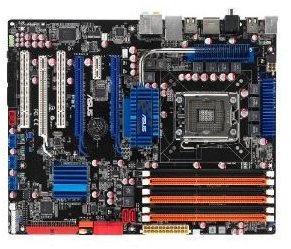Motherboard Quality: How to Look for Your Needs in a Good Motherboard
The Thing that Connects Everything
The Motherboard is probably the easiest computer component to ignore when budgeting for your new computer build or when you are trying to upgrade. Yet as the component that connects everything together it is one of the most important components you have. Having a good quality motherboard is essential to your computer’s speed and connectivity as well as the life of the computer. But most importantly, the identity of your PC is tied to your Motherboard–you don’t need to get a new version of Windows until you get a new motherboard since Microsoft attaches your Windows serial key to the motherboard. This means you can keep upgrading your computer until you replace the motherboard; then it’s like getting a new computer.
But what do you look for in a motherboard? For the person without a ton of knowledge (What is a northbridge? How do I know a good chipset?) you can do a couple easy things to check your motherboard quality:
- Price
As simple as it seems, price is a decent enough indicator of motherboard quality. The retailers will always keep their new and better models more expensive. So I’d say spending a bit more money will help you out right away. But don’t just rely on price; it’s just a place to start.
A decent price range for a motherboard as of this writing would be $150-$400 depending on your budget.
- Reviews
Again, this sounds simple but looking at the reviews for a motherboard will get you a better sense of quality and durability than pretty much anything else. Websites like Newegg, Tiger Direct, or Amazon all have good review systems with lots of users who will let you know if there are any major issues with the motherboard or whether it is high quality. Keep in mind that any computer component has a certain number of failures and problems. Just because there are a few people complaining their MB was DOA (dead on arrival) doesn’t mean you can’t get it. But if those DOA make up a disproportionate amount of the reviews (I’d say more than 5%) then I’d probably be wary.
- Components
To get a sense of the beefiness (but not necessarily the quality or durability) of the board, take a look at its components. Here are things you want to note in the components
- CPU Compatibility: Your MB will determine what processors you can use. Make sure it can use a good one and that you have space for future upgrades.
- Memory Standard: Again, this is determined by your motherboard. The faster the speed the quicker your computer will run. At least get a motherboard with DDR3. Just keep in mind you’ll have to spend more for your RAM but its totally worth it.
- Number of Connections: How many SATA connectors are there? Is it enough for your needs? How many PCI slots are there? Is your video card going to fit? Also, how many connections are build into the external portion of the motherboard (USBs particularly)? Is this going to be enough?
- Look up the Chipset
If you really want to know more detailed info on the quality of the motherboard then you might want to look up reviews and features for different chipsets. There are two parts to the chipset of any motherboard, the northbridge and the southbridge. As people with the old XBox 360s know, the chipset can determine a lot about durability and quality (the old chipset is why 360s red ringed so much). But how do you know if a chipset is any good? The best way to do it is to just search for it and look for reviews. The great thing about the internet is that there are some people out there with the technical knowledge sufficient to give you a good sense of its quality.
Go for it!
With all this in mind you should be ready to go ahead and get your motherboard! For more help and guides check out my article on CPU-Motherboard combos.
